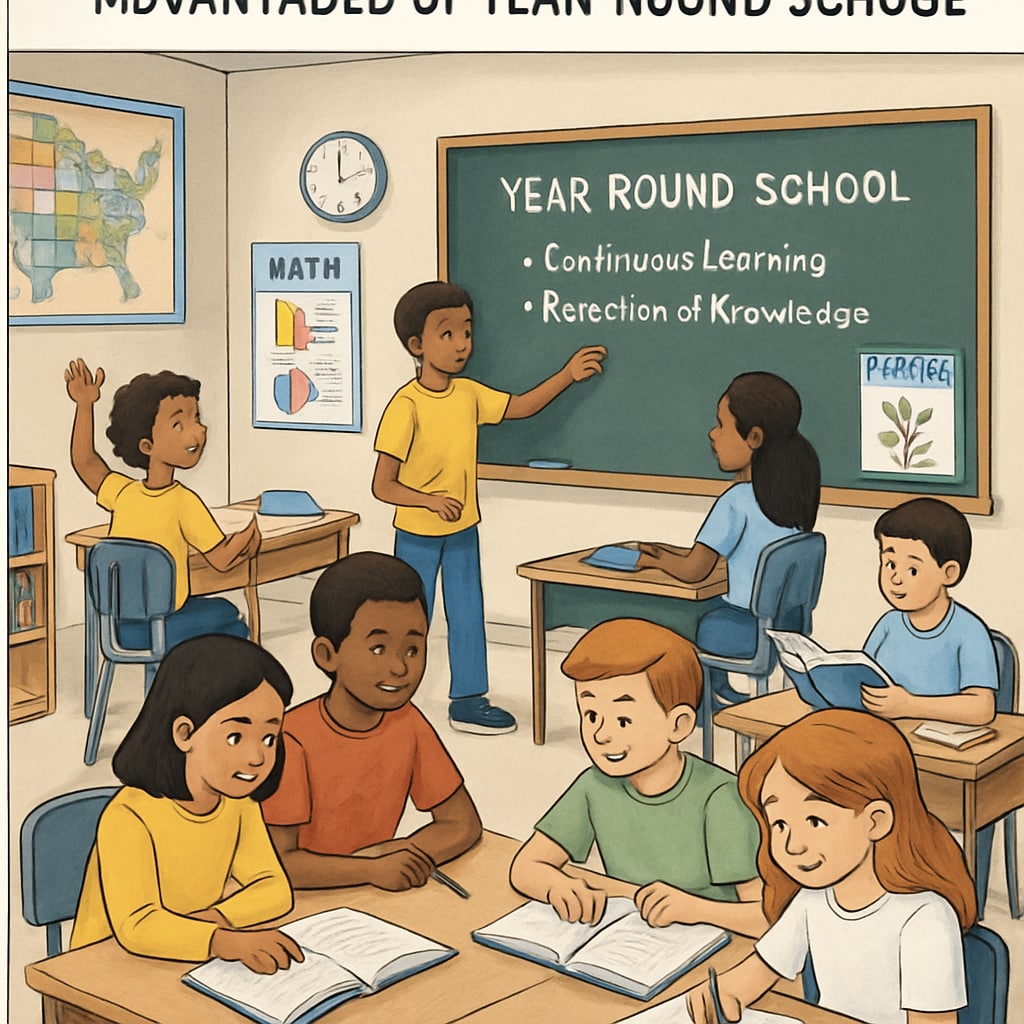For decades, the traditional school calendar with a long summer break has been a hallmark of K-12 education. However, year-round schools have emerged as an alternative model that challenges this convention. Advocates argue that this approach, which redistributes vacation time throughout the year, can address the critical issue of knowledge retention. This article delves into how reforming summer breaks through year-round education could enhance learning outcomes and reduce the “summer learning loss” phenomenon.
Rethinking the Traditional Summer Break
The long summer vacation has been a staple of education, often seen as an opportunity for students to relax and recharge. However, research has shown that extended breaks can lead to significant knowledge loss, especially in subjects like math and reading. According to a study on educational psychology, students can lose up to two months of academic progress during the summer. This “summer slide” disproportionately affects students from low-income families, who may lack access to educational resources during the break.
Year-round schools aim to tackle this issue by replacing the long summer vacation with shorter breaks spread evenly throughout the year. This model ensures that students have regular opportunities to rest while maintaining continuous engagement with their studies. For example, a “one week on, one week off” schedule could provide a balanced rhythm of learning and downtime, reducing the risk of knowledge decay.

Year-Round Schools: A Solution to Knowledge Retention
One of the primary benefits of year-round schooling is its ability to improve knowledge retention. By eliminating the prolonged gap in learning, students are less likely to forget what they have learned. This continuous learning environment supports the brain’s natural need for repetition and reinforcement.
Additionally, shorter, more frequent breaks can reduce burnout among both students and teachers. Rather than enduring a grueling nine-month academic stretch, year-round schedules can offer regular intervals for rest and recovery. As a result, students return to the classroom more focused and ready to learn.
Another advantage of this system is its adaptability. Schools can tailor the calendar to meet the needs of their communities. For instance, districts can align breaks with local events or seasons, ensuring that families still have opportunities for vacations and other activities. This flexibility makes year-round schooling a practical and customizable solution to the challenges of traditional academic calendars.

Challenges and Considerations
While the benefits of year-round schools are compelling, transitioning to this model is not without challenges. Implementing a new calendar requires careful planning and consideration of various factors, including transportation, staffing, and community buy-in. For instance, teachers may need to adapt their lesson plans to fit the revised schedule, and families may need to adjust their routines.
Moreover, year-round schooling may not be suitable for every community. In rural areas, where agriculture plays a significant role, traditional summer breaks align with farming seasons. Similarly, some parents rely on summer camps and other seasonal programs for childcare, which could be disrupted by a year-round calendar.
Nonetheless, these challenges are not insurmountable. With proper planning and collaboration among stakeholders, schools can develop year-round models that address local needs while prioritizing student learning outcomes.
The Future of K-12 Education
As the education system evolves to meet the demands of the 21st century, year-round schools offer a promising pathway for reform. By addressing the issue of knowledge retention and providing a more balanced approach to learning, this model has the potential to reshape the future of K-12 education. Policymakers, educators, and parents must work together to explore the feasibility of implementing year-round calendars and ensure that all students have access to high-quality, continuous education.
In conclusion, the year-round school model challenges the traditional notion of summer breaks and offers a practical solution to the problem of knowledge loss. With its focus on continuous learning and flexibility, this approach could play a pivotal role in enhancing educational outcomes and preparing students for lifelong success.
Readability guidance: This article employs short paragraphs, lists key points under headings, and uses transitions like “however,” “in addition,” and “as a result” to maintain flow. The content avoids excessive use of passive voice and lengthy sentences, ensuring clarity and engagement.


